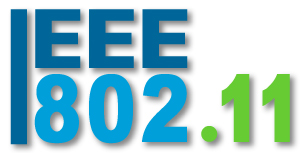|
IEEE 802.11p provides
a mature PHY for DSRC applications. However, the IEEE 802.11 PHY and MAC have
evolved significantly since completion of the IEEE 802.11p amendment, with the
standardization and widespread deployment of  additional technologies being
developed, e.g., in the IEEE 802.11n amendment, the IEEE 802.11ac amendment,
and the draft IEEE 802.11ax amendment. additional technologies being
developed, e.g., in the IEEE 802.11n amendment, the IEEE 802.11ac amendment,
and the draft IEEE 802.11ax amendment.
There is a demand to
adopt these recent IEEE 802.11 technologies for new V2X applications for higher
throughput applications, better reliability/efficiency, and/or extended range. A
few proponents have started a study group in IEEE 802.11 to explore a long-term
roadmap for V2X [1]. This Next Generation V2X Study Group was approved by the
IEEE 802.11 Working Group in its 2018 March plenary, and will hold its kick-off
meeting at the IEEE 802.11 2018 May interim in Warsaw, Poland.
Tentative agenda
items include the discussion on the scope of work, requirements, use cases, and
the preparation of the two official deliverables of the study group: the
project authorization request (PAR) and criteria for standards development
(CSD) documents.
Broadcast Services
(BCS) is another new initiative within the IEEE 802.11 Working Group that will
consider broadcast service enhancements within an IEEE 802.11-based network [2].
The tentative scope
of work of this initiative includes the enhancement of traditional broadcasting
services directed from an access point (AP) towards several non-AP stations
(STA), and the identification of use cases in which non-AP STAs employs
broadcasting to disseminate information, e.g. in an IoT environment, to other
STAs so that any of the receiving STAs may act as a access to the Internet.
The ultimate goal is
to provide a common, one-way secured information transfer between STAs that are
not associated with each other through
standardized enhanced broadcasting services, resulting in improved user
experience when using Wi-Fi within home, enterprise, and public assess markets. The first BCS study group meeting is
scheduled to start in the 2018
May interim.
Full Duplex (FD) is a
technology that allows a device to simultaneously transmit and receive signals
using the same time frequency resource. FD can significantly increase the
throughput of each allocated channel and improve the total system capacity.
In addition, the
inherent capability of FD can provide an opportunity to reduce round-trip
latency for data transmission, which is due to transmission of ACK or feedback
information and to implement an in-band relay system. An IEEE 802.11 Full Duplex Topic Interest
Group, formed in March 2018, is exploring the potential of FD for Wi-Fi [3]. The group is slated to deliver a
technical report that includes use cases, functional requirements, technical
feasibility, architecture and benefits of deployment of FD
for IEEE 802.11.
References:
[1] https://mentor.ieee.org/802.11/dcn/18/11-18-0513-02-0wng-802-11-for-next-generation-v2x-communication.pptx
[2] https://mentor.ieee.org/802.11/dcn/17/11-17-1736-04-0wng-broadcast-service-on-wlan.pptx
[3] https://mentor.ieee.org/802.11/dcn/18/11-18-0191-01-0wng-full-duplex-for-802-11.pptx |